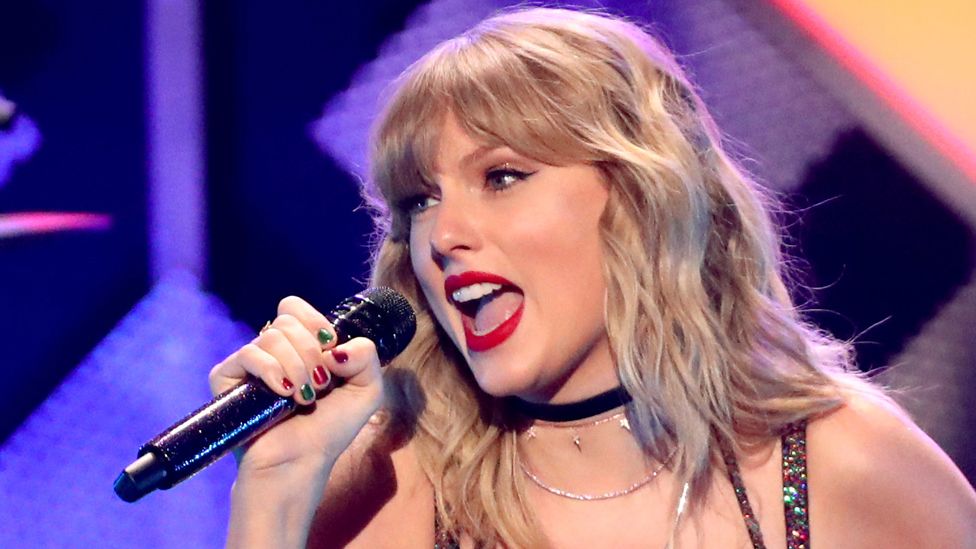ARTICLE AD BOX
 Image source, Getty Images
Image source, Getty Images
By Mark Savage
BBC Music Correspondent
Taylor Swift is a musical chameleon.
Over the course of 16 years and nine albums, she's switched genres from country to pop to alternative to folk.
On Friday, she will release her latest record, Midnights, described as "the stories of 13 sleepless nights scattered throughout my life... a journey through terrors and sweet dreams, the floors we pace and the demons we face".
It marks a return to more personal subject matters, after the novelistic approach of her last two records, Evermore and Folklore.
Speaking on Instagram, Swift revealed the opening track Lavender Haze was inspired by her six-year relationship with actor Joe Alwyn. Another Song, Anti-Hero, is a "guided tour" of the star's insecurities.
What we don't know, however, is what the album will sound like. Swift generally changes lanes every two albums, so Midnights is unlikely to have the indie-folk feel of her pandemic-era releases
Beyond that, it's anyone's guess. Even radio stations aren't receiving the tracks in advance.
But like all great songwriters, Swift has developed a musical language of her own, never painting by numbers but always making it count (her words, not mine).
Here's how she's explained her writing process over the years.
Into the mist, into the clouds: The inspiration
Image source, Valheria Rocha
Inspiration can strike at any place or time - but Swift has often described it as a ghostly, physical presence.
"It's like this little glittery cloud that floats in front of your face, and you grab it at the right time," she told the New York Times in 2019.
She repeated the metaphor in an interview with Harpers Bazaar, adding: "That's the purest part of my job. It can get complicated on every other level, but the songwriting is still the same uncomplicated process it was when I was 12 years old."
And it seems like anything can trigger a song: Her breakthrough hit, Tim McGraw, came to her during a high school maths class. Ronan was inspired by a mother's essay about her son having cancer. Tolerate It was inspired by the book Rebecca by Daphne Du Maurie.
"It happens differently every time, and that's why I'm still so in love with songwriting," Swift said.
I got a blank space, baby: The lyrics
Swift started as a country musician, and retains the genre's gift for storytelling.
Her lyrics are detailed and relatable, whether she's singing about teenage crushes on Begin Again ("You don't know why I'm coming off a little shy/But I do.") or skewering her media portrayal in Blank Space ("Darling, I'm a nightmare dressed like a daydream.").
A voracious reader, she makes "lists and lists and lists" of words she loves - like epiphany and divorcée - and frequently bases songs around "phrases people say in conversation", á la You Need To Calm Down.
"Sometimes a string of words just ensnares me and I can't focus on anything until it's been recorded or written down," she told NYU students in a speech this summer.
As she's matured as a songwriter, her lyrics have become less literal.
"I had this song called Picture To Burn, that's talking about how 'I hate your truck,' and 'I hate that you ignored me,' 'I hate you,'" she once told MTV, while discussing her debut album. "Now, the way that I would say that and the way that I would feel that kind of pain is a lot different."
By 2012's All Too Well, she was capable of writing this devastating couplet: "You call me up again just to break me like a promise / So casually cruel in the name of being honest."
Co-writer Liz Rose said the lyrics spilled out so fast, that she struggled to keep up.
"She had a story and she wanted to say something specific. She had a lot of information. I just let her go," she told Rolling Stone.
Warning: Third party content may contain adverts
All Too Well is what Swift calls a "fountain pen song" - one that paints "a vivid picture of a situation, down to the chipped paint on the door frame and the incense dust on the vinyl shelf."
It's her most common mode of writing, and you can hear it again on tracks like New Year's Day, Cruel Summer and Lover.
She categorises her other lyrics in similar ways.
Inspired by Romeo and Juliet, Love Story is a "quill pen" song where "the words and phrasings are antiquated" like "a letter written by Emily Dickinson's great grandmother while sewing a lace curtain".
Shake It Off, meanwhile, is the ultimate "glitter gel pen" song: "Frivolous, carefree, bouncy, syncopated perfectly to the beat."
This is me trying: Finding the melody
Image source, Taylor Swift / Instagram
Swift has been unusually generous in sharing her songwriting process with fans, frequently releasing voice memos and demos.
A fly-on-the-wall video for the song Delicate shows her searching for words to fit a nascent melody.
Producer Max Martin loops the backing track, as Swift composes in motion, improvising sounds and syllables and examining how they land rhythmically until she hits the right combination.
Other times, it comes more easily. There's a spine-tingling moment in this video, where Swift and co-writer Jack Antonoff pull a chorus out of thin air in just 28 seconds.
When they're done, Swift screams with excitement.
Collaborators often mention Swift's unstoppable stream of ideas. "Taylor is texting you the day before: 'Here are the lyrics, here's a line, here's a melody. Boom, boom, boom, boom, boom,'" said Ryan Tedder, who worked on the songs Welcome To New York and End Game.
"She starts the moment you get in, and you're halfway done with the song by lunch; you're done with it by the end of the day. Most artists are not that way."
I keep writing songs about you: Composing confessionals
Image source, Reuters
Image caption,Swift is the only female artist to have eight UK number one albums this century
"If you're horrible to me I'm going to write a song about you and you are not going to like it. That's how I operate," Swift told the Mail On Sunday in 2009.
It's a quote she came to regret. The media's focus on her boyfriends - Jake Gyllenhaal, Harry Styles, Taylor Lautner, Tom Hiddleston - often threatened to overshadow her music.
But boyfriend songs were only one string to Swift's bow. Soon You'll Get Better is a heartbreaking ballad about feeling helpless in the face of her mother's cancer; while one of her first compositions was The Outside, written as a 12-year-old Swift suffered at the hands of bullies.
"I was a lot different than all the other kids, and I never really knew why," she said. "I was taller, and sang country music at karaoke bars and festivals on weekends while other girls went to sleepovers. Some days I woke up not knowing if anyone was going to talk to me that day."
It became fashionable to describe the star as a musical diarist until she defied that definition on Folklore, whose hushed compositions told the story of a love triangle between three fictional teenagers.
"There was a point that I got to as a writer who only wrote very diaristic songs that I felt it was unsustainable for my future moving forward," she told Zane Lowe upon the album's release.
"It felt too hot of a microscope. On my bad days, I would feel like I was loading a canon of clickbait, when that's not what I want for my life."
We never go out of style: Taylor's trademarks
Image source, Getty Images
From Michael Jackson's "hee-hee" to Prince's "ah-oh-wa", lots of artists have vocal trademarks. Swift is no exception, although hers is more subtle than most.
Musicologist Nate Sloan has branded it the "T-drop" - a unique melodic progression, where she takes a short step down, followed by a steep, plummeting drop.
You can hear it in songs like You Belong With Me and State Of Grace: Swift goes from the fourth note of the scale to the third, then jumps down to the sixth.
But that's not her only motif. Swift's songs are scattered with recurring images of big cities (representing adulthood), cars (for getaways, romantic or otherwise), dresses (dresses) and December (a bad month for break-ups, apparently).
Many also take place in the dead of night, when normal life is suspended and anything can happen.
Breathe, Enchanted and I Wish You Would all occur at 2am; while Midnight, the subject of her new album, already crops up in Style, New Year's Day and The Last Great American Dynasty.
The star's never explained her obsession with the small hours (although she often writes in the dead of night) but sometimes, being specific just helps the story.
"You're naming the places you went and the time it happened and all the things about a relationship," she told Songwriter Universe.
"The more it seems like a journal entry the better. The more it seems like an open letter the better. The more true and honest and real it gets the better."

 2 years ago
42
2 years ago
42








 English (US)
English (US)